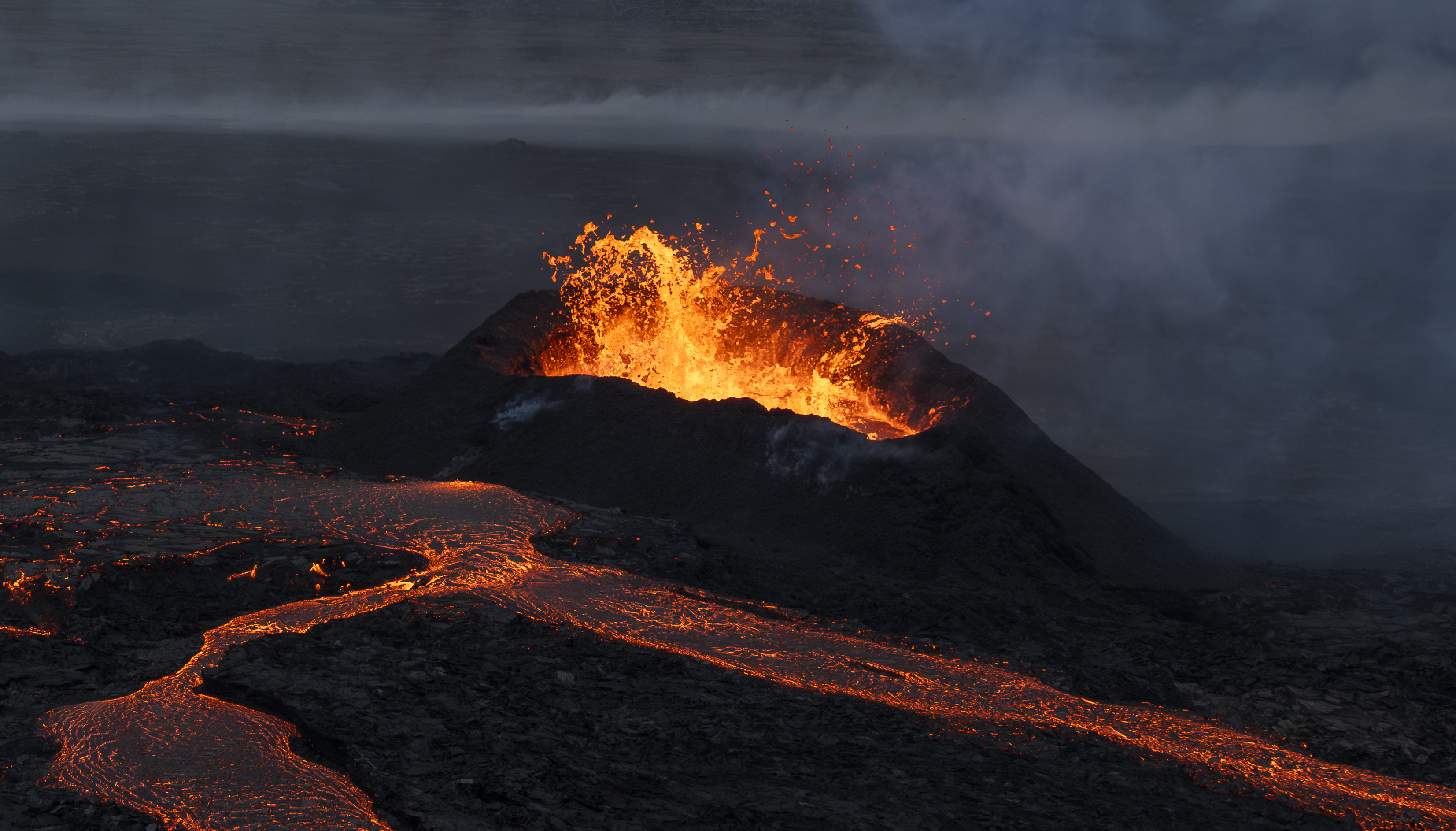Edinburgh, no stranger to an occasional haze, experienced an unprecedented atmospheric event on 31 May, unlike any seen in over 30 years. While sea haar from the North Sea often blankets Scotland’s capital, especially in late spring and summer, the haze observed that Friday seemed distinctively different. Could it be air pollution? And if so, from where? Northerly winds were bringing unseasonably cold conditions to the UK, but these are usually associated with clean polar air. UKCEH scientists from the Atmospheric chemistry and effects group Dr Massimo Vieno, Dr Marsailidh Twigg and Dr Eiko Nemitz explain more.
On 29 May 2024 at 12:45 GMT (13:45 BST), a new fissure eruption started on the Reykjanes Peninsula, northeast from Sýlingarfell in southwest Iceland. This marked the fifth eruption in a series that began in December 2023 near the town of Grindavik. Initially deemed a local concern due to its non-explosive nature, the eruption’s impact on air travel and UK airspace remained minimal. However, due an unusual meteorological configuration, sulphur dioxide (SO2) levels in Scotland rocketed to levels not witnessed since the 1970s on the morning of 31 May.
The Scottish Environment Protection Agency’s national volcanic emissions network first detected an increase in SO2 on the Isle of Lewis on the evening of 30 May, originating from this eruption. During the early hours, the plume moved southward, peaking in Scotland’s Central Belt by 6am on 31 May. St Leonards in Edinburgh reported a maximum concentration of 1161 µg m-3.
We investigated the source using a combination of observations and modelling data, making it highly likely that the high SO2 levels could be attributed to the Icelandic volcano. The UKCEH’s EMEP4UK atmospheric chemistry transport computer model was used to calculate in near real-time the plume of SO2 from the eruption and simulate the concentration at the measurement sites.
